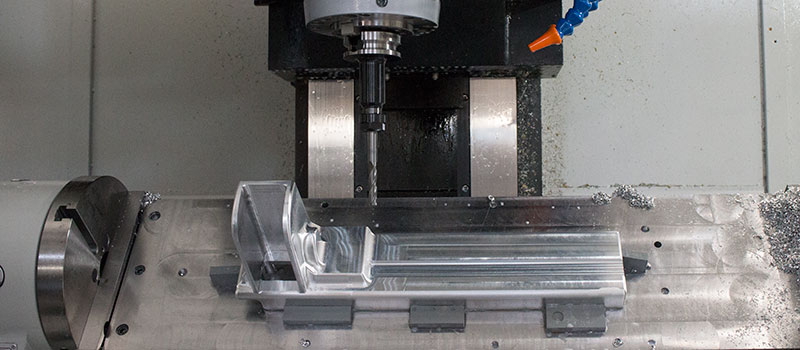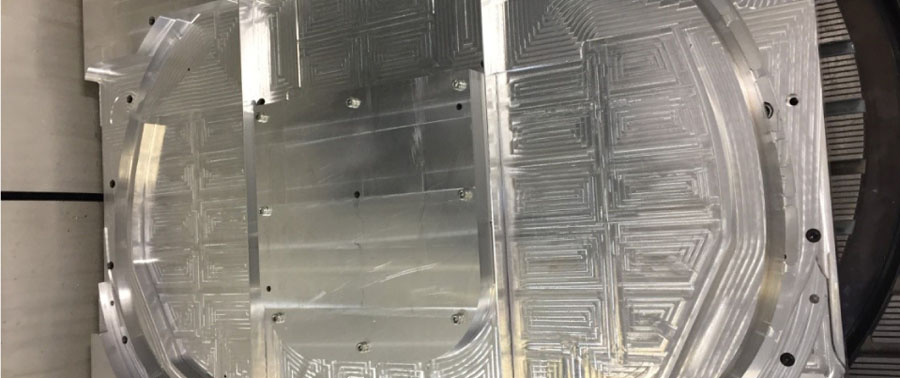At present, the continuous development of computer application technology and the increasingly fierce market competition have greatly promoted the development of CNC machining technology for thin-walled parts. In recent years, technical research on this type of process has gradually shifted from traditional empirical exploration to scientific research. From the aspects of part clamping, cutting method and processing route, the factors that affect the CNC machining process of thin-walled parts are analyzed in detail, and then methods to improve the production process are proposed based on these factors.
Influencing Factors
Thin-walled parts have the advantage of light weight, but they are not very strong in use. The problem is that the structure is more complicated. During processing, due to unskilled technology or other reasons, it is easy to deform or damage due to improper operation. To improve the accuracy of parts, it is necessary to conduct a comprehensive and detailed analysis of the factors that can affect the accuracy of the machining process, and to find ways to improve the process. The factors that affect the CNC machining process can be roughly divided into: machine tool accuracy, machine tool strength, process route, cutting method and path, and deformation caused by clamping.

1. Part clamping method
To solve this problem, it is necessary to choose the correct and reasonable clamping method to improve the accuracy of the CNC operation process. It is necessary to carry out detailed and detailed data analysis to find out the position of some parts of the parts that are easily deformed due to external force. For most clamping devices, professional fixtures, such as construction rings, can also be used for processing. In this regard, it is also necessary to explain that under normal circumstances, the axial clamping can be replaced by the radial direction, and the more commonly used improvement methods are used to deal with the positions where the parts are easily deformed. If you want to improve the accuracy of the parts, you can also improve the strength of the parts. The current common method for this problem is to increase the wall thickness. But this also brings new problems, such as how to deal with vacancies. At this time, it can be filled with paraffin, of course, it can also be operated with rosin. This method is similar to the ancient “lost wax method” used to make bronze. After finishing, all the poured materials must be cleaned up.
2. Choice Of Angle
A large number of actual tests show that if the machine tool structure system and the data of the tool can be basically determined, the cutting force will also be affected by many factors, which will eventually lead to the deformation of the processed article. But among these factors, the cutting angle of the tool is the most influential. If the front and back angles of the tool can be used correctly, the deformation can be effectively reduced to a large extent, and at the same time, it is also beneficial to reduce the degree of friction damage. In the process of processing, the cutting force received in the axial and radial directions is mainly determined by the angle of the sheet. For some weaker parts, the entering angle should be as close as possible to 90° at this time. Therefore, when processing different items, the angle problem is not fixed, but should be analyzed according to the actual situation.
3. Way And Path Of Knife
Unreasonable cutting methods and paths may also cause deformation of the processed parts. If this is improved, the primary problem is to focus on accuracy. There are two methods in the current multiple cutting methods that can not only improve efficiency, but also can complete roughing more quickly and are not prone to deformation. They are one-time and stepped roughing methods. The common point is to follow the traces of the high line and the tool path that is equal to the processing amount. However, compared with the traditional operation method, due to the oblique angle machining has great disadvantages, it is also easy to cause damage and deformation of the parts, so when the tool moves in parallel along the contour line with the x-axis or y-axis direction, it can be Easily eliminate the impurities attached to the surface of the article, which greatly improves the accuracy, and can effectively protect the tool when cutting, reduce unnecessary wear, extend the service life, and improve the processing quality.
4. Processing Route
For any processing enterprise, after the introduction of advanced equipment, it is necessary to continuously debug, so as to improve the level of processing technology, but for the deformation of thin-walled parts, it is also necessary to find out the reason, and at the same time, explore the fundamental law of its deformation. To carry out detailed research and analysis on these problems, for most professionals, it is also necessary to work out a reasonable processing route. However, in this process, if deformation problems occur due to unreasonable procedures and processes, it is necessary to find the correct solution, and also need to master its laws. It can also be seen from the general process of the processing process that the strength and specifications of the parts are different, so the force-bearing parts need to be changed. At the same time, the contact method of the components needs to be comprehensively considered to avoid vibration during the processing, which will lead to Deformed.

Process Improvement Method
In the early stage of process design, most of the professional technology of high simulation is adopted, and the real process system needs to be simulated, and the most suitable improvement method is found by contacting the characteristics of the system. The basic content of CNC machining technology includes geometry and physical simulation. Geometry is mainly to observe and detect problems in machine tools, tools, workpieces and other items according to the actual conditions of the tools. Physical simulation is to create a process model. It is used to analyze the error value under the micro concept. Taking cutting as an example, when setting the tool path, you should first consider whether the workpiece is deformed or not. If deformation occurs during processing, it is sufficient to prove that there is a problem with the process. At present, most of the thin-walled parts are light, but their strength has not changed significantly. Therefore, the current general development trend of thin-walled parts is light weight, but due to light weight, it is easy to lead to insufficient strength. However, too high strength can easily lead to the rapid wear of the CNC equipment and increase the operating cost. Therefore, there is a big contradiction. If you want to make the parts thinner and lighter, the processing difficulty is also increasing. This series of problems requires the operator to consider the path problem when processing, carefully observe the various situations encountered by the workpiece during processing, and make preparations to adjust the path at any time according to the actual situation to ensure that the tool is always All can work normally in the preset track, and try to avoid the error of the path, which will cause the abnormal situation of the processed product. In addition, the modification and compensation of the tool path can also greatly reduce the error value caused by the deformation and rebound of the part. When the workpiece is clamped or is being cut, the cutting speed and angle will affect the state of the processed article. From the perspective of cutting, this problem needs to be inspected according to scientific and reasonable methods. At the same time, other methods can also be adopted. Perform auxiliary operations on it. For example, appropriately increasing the front and rear angles of the cutters can effectively control the cutting speed and the friction between the cutters.
Conclusion
At present, the progress of machining technology is quite rapid, which has also played a great role in promoting the rapid development of the CNC machining industry. It is also used in major processing industries, such as aerospace, machinery manufacturing, etc. At present, people’s requirements for the CNC machining of thin-walled parts are constantly increasing, requiring them to have better quality than before in order to meet the needs of the current modern machining industry. For the CNC machining process of thin-walled parts, there are many factors that can affect the quality of the machining process, such as part clamping, cutting angle, cutting method and path, and processing route. Therefore, as professionals, you must master these factors. At the same time, you also need to understand the methods to improve the processing technology, so as to promote the continued development of the industry.


